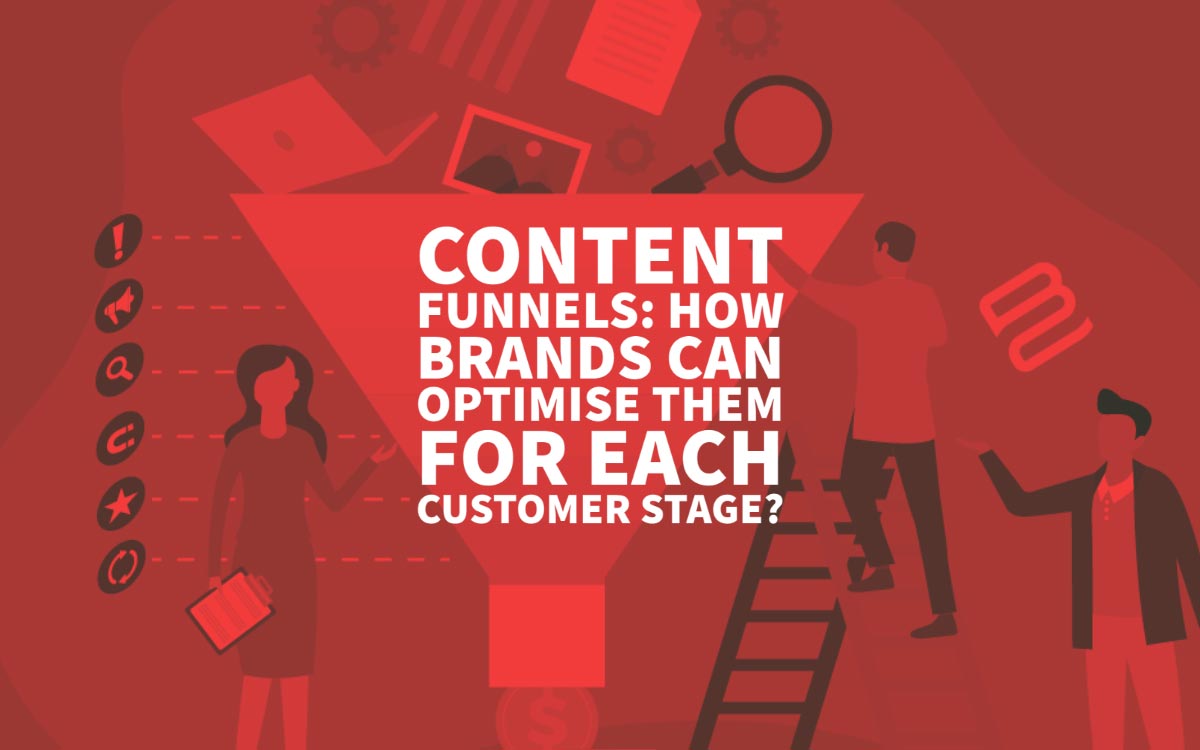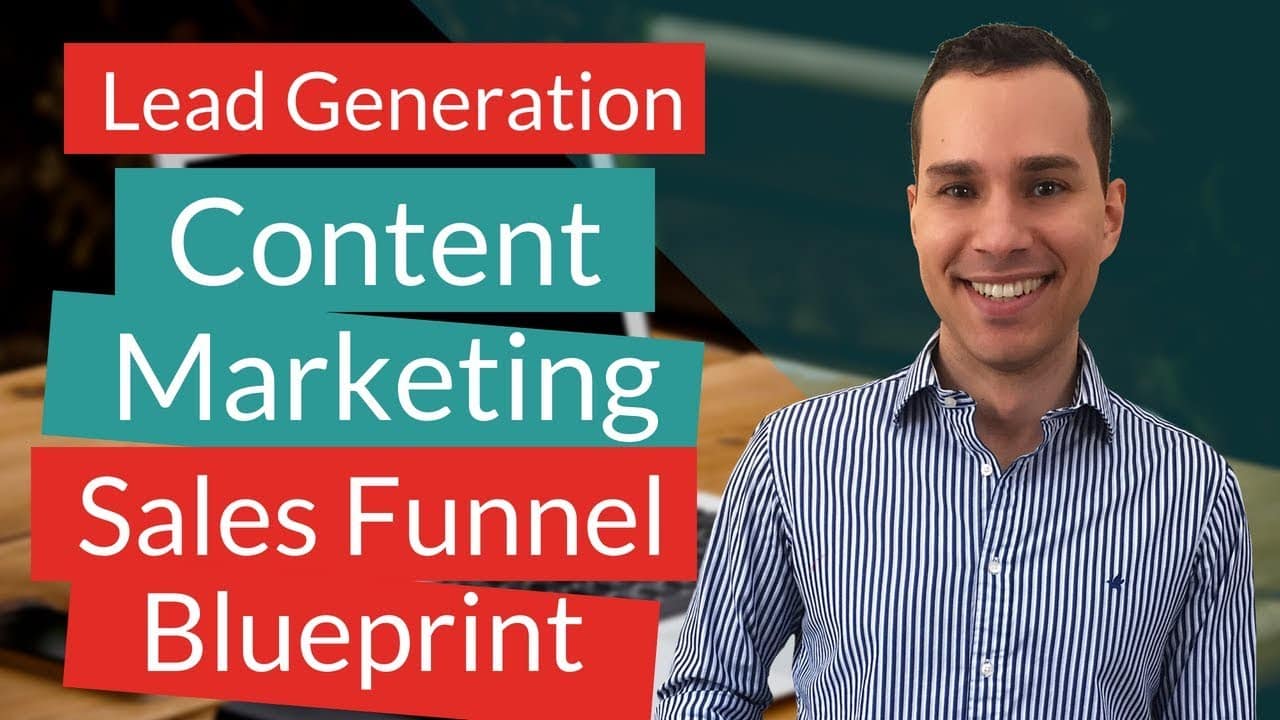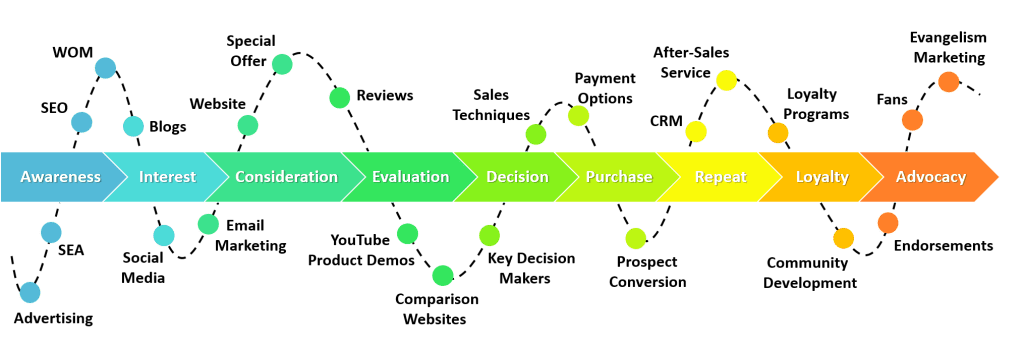
01 Feb Content Funnels: How Brands Can Optimise them for Each Customer Stage?
Content Funnels: How Brands Can Optimise them for Each Customer Stage?
Focusing on optimising your content for each stage of the content marketing funnel is crucial.
Why do I say that?
You create content with a specific purpose: to encourage customers to buy your product or service, offer more information, or to let them sign up for your newsletter, program, or course.
And creating useful content in all stages of the customer journey will help you to achieve your goal.
It’s no wonder that 70% of marketers are actively investing in content marketing.
This article will look at the different stages of the content funnels and how brands can optimise and distribute content effectively for each customer stage.
What are Content Funnels?
The content funnel is a part of the content marketing strategy that envisions your prospects’ journey when considering whether or not to buy your product or service.
The content you offer in the different stages will help the customer in their journey and push your prospects closer to purchasing.
Here’s a rough diagram of each stage in the content funnels:

Let’s talk about all the states of content funnels in detail.
Stages of a Content Funnel
- Awareness Stage
This is a stage when buyers have only just realised that they are facing a problem. They aren’t yet aware of the options available that can solve their problem. They also don’t have the names of many brands in mind that they might or wish to try out. Thus, you will have to offer top-of-funnel content to educate and make them aware.
- Consideration Stage
Your customers’ interest in your company has developed at this stage, and they are even considering buying your products. Here, your job is to help them realise that your product is credible enough to meet their needs.
You will also have to convince them that your product is the best option possible. Thus, the focus should be on positioning and showing off your unique selling points and your product’s extra value that beats your competition.
- Conversion Stage
Here, your prospects have already turned into buyers, but they still want to feel confident or make sure they are making the right purchase. Therefore, your content needs to focus on giving them valid reasons why they are making a smart move by buying your product or service. At this point, it’s a great idea to highlight your product features or give side-by-side comparisons of similar products to influence a purchase.
- Loyalty Stage
Now, your customers have reached a stage where they have started to develop a liking for your brand. They make repeat purchases even though you don’t remind them of it- simply because they genuinely like your product. And these customers will still stick with your brand even when you may face some problems or are getting negative feedback.
At this stage, it’s also crucial to improve your customer service to garner maximum customer loyalty.
- Advocacy Stage
This is the final and optimal stage. Here your customers are not only just customers, but they have become fans. They willingly choose to become your own brand’s ambassadors as you are doing something right.
Attractive Content Strategies for Each Stage
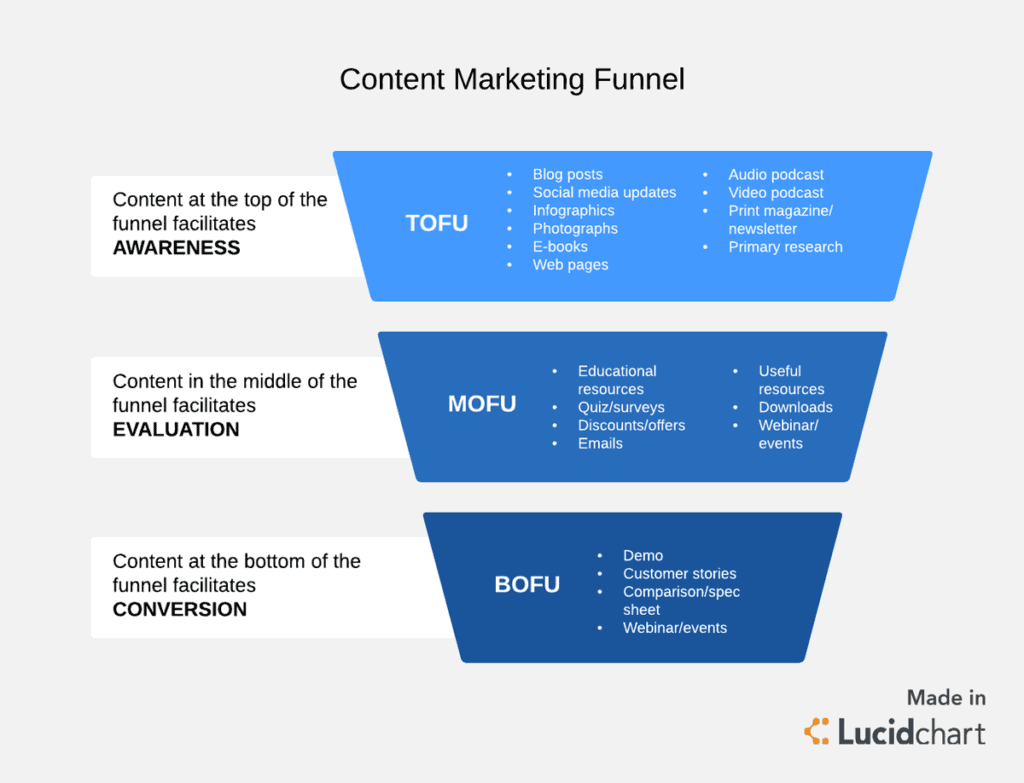
Now, let’s get into the different attractive content strategies that you can implement at each stage.
Awareness Stage Content
Ads can increase your sales and revenue by making more people aware of your products and services. They also enable your target consumers to make decisions about the best product and service to buy.
However, it’s worth noting that 70-80% of users don’t pay much attention to sponsored search results. Thus, it’s essential to use behavioural data for online ad targeting and display your ads to audiences that genuinely need your products.
Moreover, you will have to be smart enough to know when and where to use which type of ads. It will hugely depend on your type of audience and goals.
For instance, display ads are best to retarget website visitors, while video ads usually work 14% better in apps and 8% better on mobiles than desktop. And then there are social ads that are perfect for generating brand awareness and acquiring prospects.
Landing pages are great for promoting your marketing campaigns. They help in driving traffic, improving your SEO, and building your brand. Plus, they can lead consumers to a specific product and make them take action, thus increasing your conversions and building your customer base.
According to statistics, 10-15 landing pages can improve your leads by 55%, and each landing page has a conversion rate of 9.7% on average.
Some of the best landing page practices include:
- Aligning the landing pages with the goal of your ad campaigns
- Simplifying your forms
- Using clear CTAs
- Simple navigation
- And more…
Besides, make sure that the type of content you create is interesting enough for your readers to justify taking action.
- Infographics
Infographics are better for organising and visualising data more compellingly as compared to written text. Naturally, it’s better to use them, especially when you’re trying to share a lot of information, as it makes everything more engaging and easy to understand.
And that’s not it! If statistics are anything to go by, infographics get 3 times more shares than other types of content on social channels.
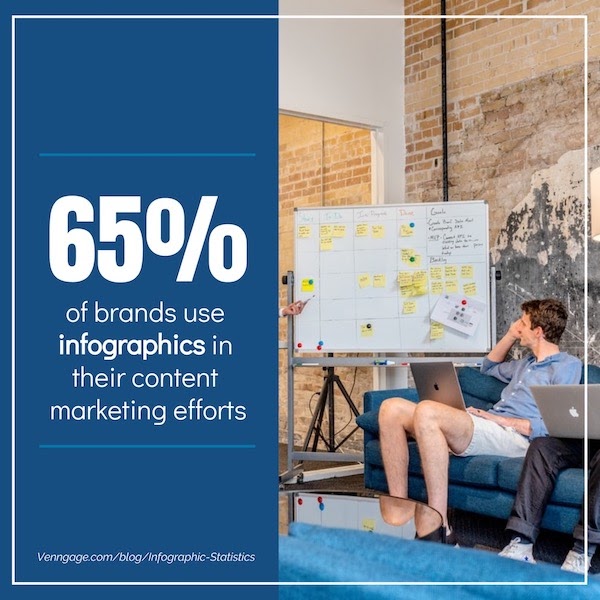
- Interactive Videos
Though videos necessitate a more significant investment of time and resources than written content, visual marketing increases in popularity.
Statistics suggest that video content is 40 times more likely to get shared on social channels than other content types.
Consequently, it is worth the investment.
Moreover, videos are highly engaging and the most preferred form of content among consumers. After all, they capture people’s attention more than any other content type.
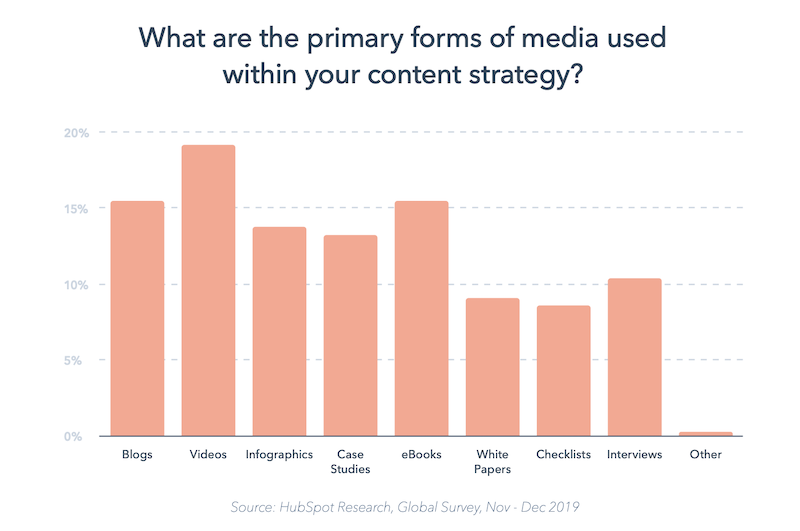
- Case Studies
Many marketers believe that case studies bring in the most leads.
For instance, when B2B buyers do online research for products or services they are interested in, they look for customer reviews, testimonials – and, most importantly, case studies.
Thus, they become a very crucial component of the content marketing toolkit.
Case studies mainly consist of brand promotion via online content that educates its audience, including its target customers.
Consideration Stage Content
- Interactive Videos
Whichever product you are selling, a physical product, or something complex like software, videos will help you tell a story that text content cannot.
Plus, videos are known to get more conversions, shares, and engagement. They don’t have to be very short, either. Your videos can stretch over 20 minutes as they account for 55% of the entire video consumption time on smartphones.
- Product Comparison Guides
At this stage, your target customers are still considering solutions to their problems. And this is where product comparison guides come into play. These guides come in handy to help your audience make a reliable decision.
Make sure to include your product’s main features in the guide, preferably as a bulleted list. Also, include a detailed description of the similarities and differences of comparable products on a single page.
- How-To Guides
Your consumers would like to learn new skills that will help them solve their problems. When they buy a product, they may need to become more informed about the pain point and skills required to solve it.
That’s where building a knowledge base that includes how-to guides, how-to articles, or instructional video content comes in handy.
For instance, Moz breaks down the SEO principles to the viewers in easy-to-understand language and visuals in their popular video series, Whiteboard Fridays.
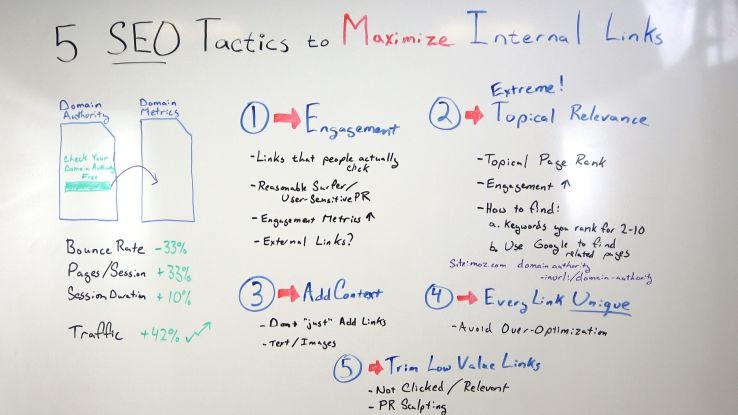
Such how-to guides and videos make a complex subject like SEO easy and accessible to their viewers.
- Free Samples
“I don’t like freebies.”
Said no one ever!
Thus, giving away free samples is one of the best measures you can implement to increase sales and drive product awareness. Naturally, your consumers are more likely to purchase from you when they get a free sample of what they are getting.
It is instrumental if you are a new brand or launching a product that people are not that familiar with. Thus, giving away free samples to demonstrate the effectiveness of your product first-hand is a great idea.
- Customer Testimonials
According to statistics, 92% of customers read online reviews before making a purchase. And 72% of customers state that positive testimonials and reviews make them trust a business more.
Thus, fetching customer testimonials and displaying them on your website or social media channels will increase customer trust and generate more revenue. As per stats, using customer testimonials regularly will increase your income by 62% approximately.
Some creative ways to get customer testimonials are via Facebook reviews, LinkedIn recommendations, and Google My Business. Also, don’t forget to leverage Google Alerts and social mentions, either.
Conversion Stage Content
Coupons are great for generating the fear of missing out (FOMO). Thus, it’s a great addition to your marketing strategy to boost sales conversion rates and increase customer loyalty.
Moreover, using digital coupons can successfully grow your social media following and email marketing list.
Even statistics suggest that 90% of customers use coupons, while 63% say they want coupons to be more available.
- Consultation Offers
You can offer consultation to provide a little bit of service in return for the opportunity to close the deal. While you are at it, focus on reducing the customer’s nervousness of entering into a sales conversation. You can promise something tangible like actionable advice in exchange for their time.
Regularly publishing content on your website is a good idea, but distributing your content on social media is likely to benefit you more.
You can repurpose your best or evergreen content into new formats and publish them on different social networks or simply create original social media content.
It will create brand awareness, broaden your reach, and help you to deliver content to your customers where they are present. But make sure you are posting the type of content your followers want to see.
For instance, Instagram is best for posting images, videos, and graphics reflecting current events, user-generated content, or content about behind the scenes of your organisation.
On the other hand, Facebook is more suitable for sharing your blog posts and website content. Plus, you can also share videos, product promotions, and unique memes that your customers can relate to.
- Live Demos/Webinars
A live product demo/webinar can showcase your product to your existing customers or prospects. And it will familiarise your target audience with the product or service you are offering.
While you are at it, remember that product demos are not a one-size-fits-all solution. You need to customise it for each client. Do your research carefully before you start and focus on only a handful of the most relevant features.
Also, avoid making your webinar marketing strategies/live demos too promotional. Instead, focus on selling your solution rather than your product using a unique selling proposition.
Loyalty Stage Content

- Special Offers
Stats suggest that you can sell up to 73% more by offering a bonus pack. Offers and incentives can help retain your customers, encourage repeat purchases from existing customers, and attract more loyal customers – benefiting your brand in the long run.
Some remarkable offer ideas include Buy One – Get One Free deal, free delivery, gift vouchers, loyalty cards, and gift cards.
- Loyalty Programs
Loyalty programs allow you to deepen the engagement of your loyal customers. The more engagement they make, the more they are likely to promote your brand. What’s more, a loyalty program can help you generate more revenue by retaining your current customers.
Besides, loyalty programs are cost-effective and can boost social proof, word-of-mouth, and customer referrals.
As per studies, the likelihood of selling to an existing customer is 60-70%, while it is only 5% to 20% for a new prospect. Moreover, loyal customers spend 67% more as compared to new customers.
Conducting market research will help you identify your customers’ requirements and build strategies accordingly to retain them and garner new customers.
For this, you need to collect facts and data from consumers. Eventually, the data collected will help you to offer a competitive edge.
With surveys, you will gain valuable insights into areas, including product feedback, target markets, customer responsiveness and loyalty, buying habits, and brand awareness.
Follow these steps to conduct a successful survey:
- First, ask yourself why you want to conduct the survey.
- Find out more about your target audience and the ones most likely to fill your survey.
- Find out the number of respondents you require.
- Finally, choose the right moment to carry out your survey.
Pro Tip: You can leverage the live chat experience to carry out quick surveys and instant results.
Advocacy Stage Content
- Post-sale Email Campaigns
A post-sales email marketing campaign involves sending a series of automated emails after a customer has bought a product.
Repeat sales are crucial for your business’s success in the long run. On a side note, your business success will help you sleep better as well!
In that case, post-sales email campaigns will help you gain repeat customers, naturally helping you achieve business success.
If a buyer completes a purchase, he/she has the potential to become a valuable asset to your company since they spend more than new customers.
Plus, it is more expensive to find a new customer than selling your product to an old customer. Existing customers spend up to 500% more as compared to new customers.
And there’s no better way than email marketing to retain customers.
Email marketing is a great way to engage past customers owing to its high ROI. For every $1 spent on email marketing, you can get a return of around $44 in sales. Moreover, you will be building customer relationships even after you close the deal.
- Customised Landing Pages (for returning customers)
When it comes to marketing, the biggest gain you can get out of personalised landing pages is the relationship you instantly build with your visitor. You are directly connecting with them and letting them know that you care about their needs. Plus, it builds tremendous customer trust.
From a business viewpoint, the most significant benefit of personalisation is the increase in the success rates of your CTAs. According to HubSpot, it can be up to 42%.
Whether you are trying to get visitors to fill out a form, try out a software demo, or return to their shopping cart, approach them straight up with a soft sales pitch and some personal information, and you will win the game.
- Reviews and Ratings
As per the research conducted in 2019, 75% of shoppers depend on reviews to learn about and evaluate products. Ratings and reviews are an invaluable source of feedback.
When customers leave reviews, it will help you know:
- If there are any defects in your product
- Learn about new use cases
- And tweak your product for a better customer experience.
Customers want to see companies use their reviews, both positive reviews (25% of them) and negative reviews (38% of them), to make product enhancements.
Time to Optimise Your Funnel
A brand must focus on optimising content for each content marketing funnel stage.
It will make customers aware of your brand and the solution you have for their pain points, make more informed decisions while making a purchase, encourage repeat purchases, and turn your customers into your brand ambassadors.
At each stage of the content funnels, there are specific strategies you can implement, as discussed in this article.
Follow them to ensure that your content marketing strategy works for your brand and move your business forward.
